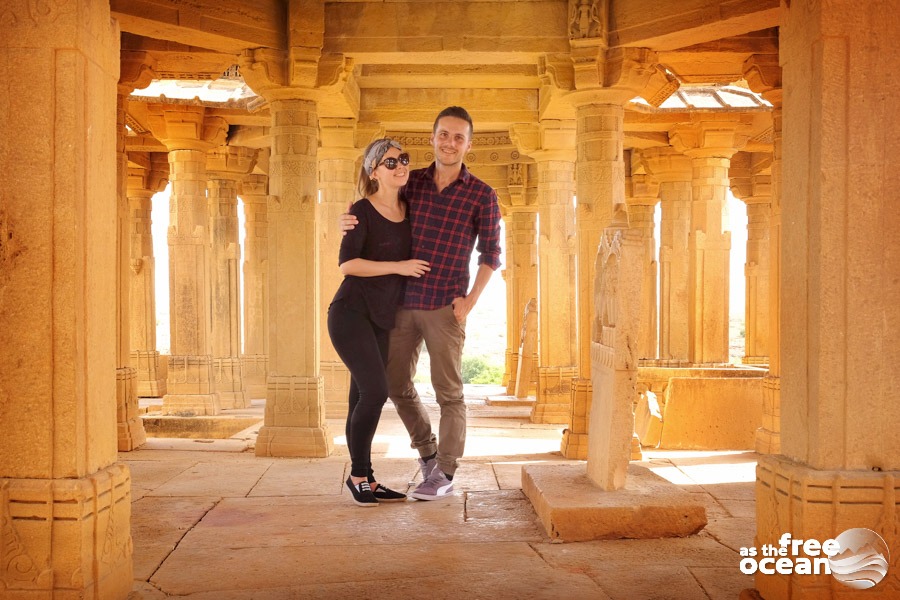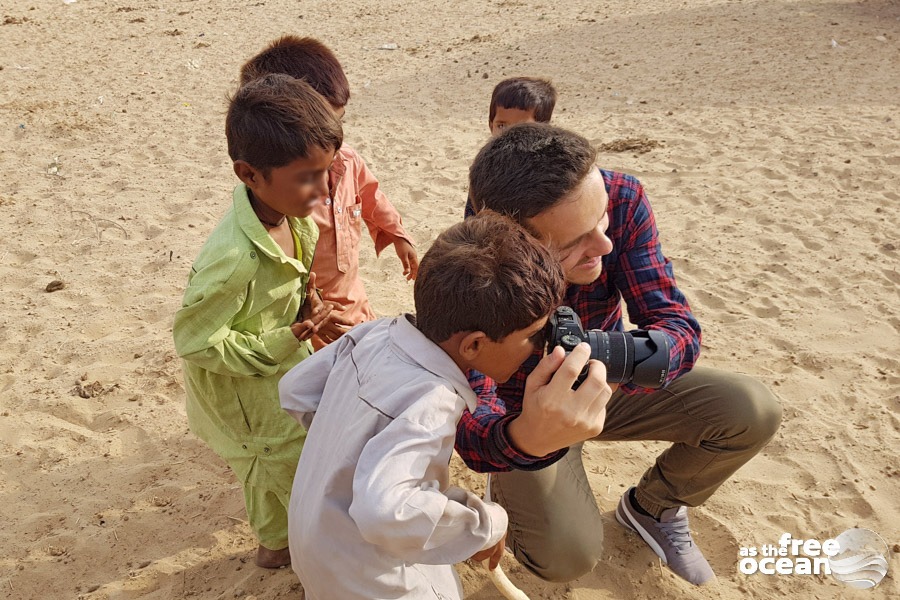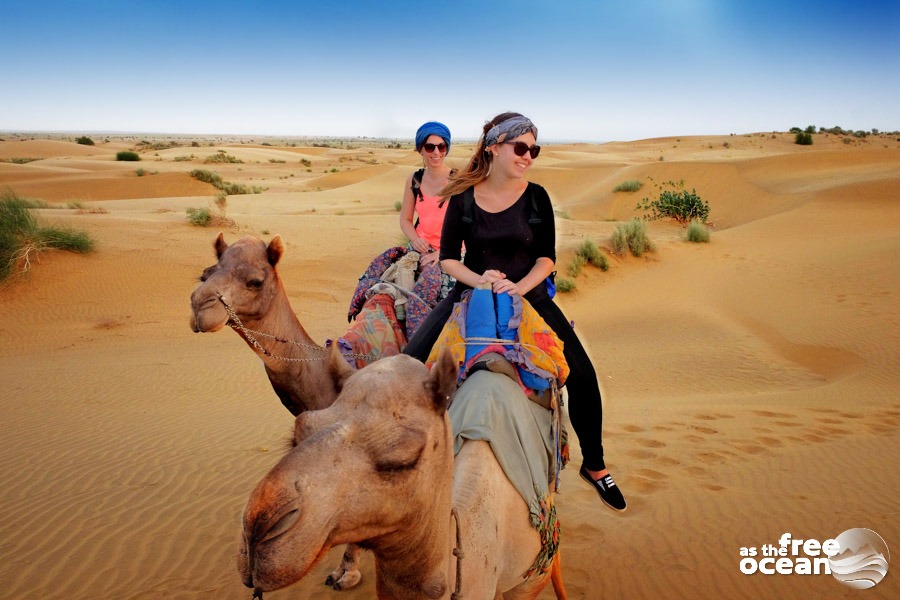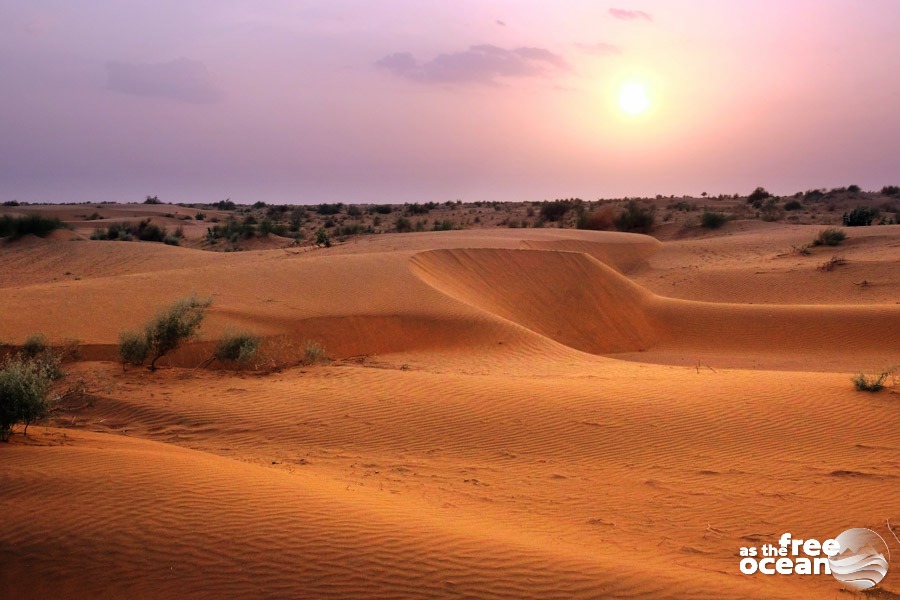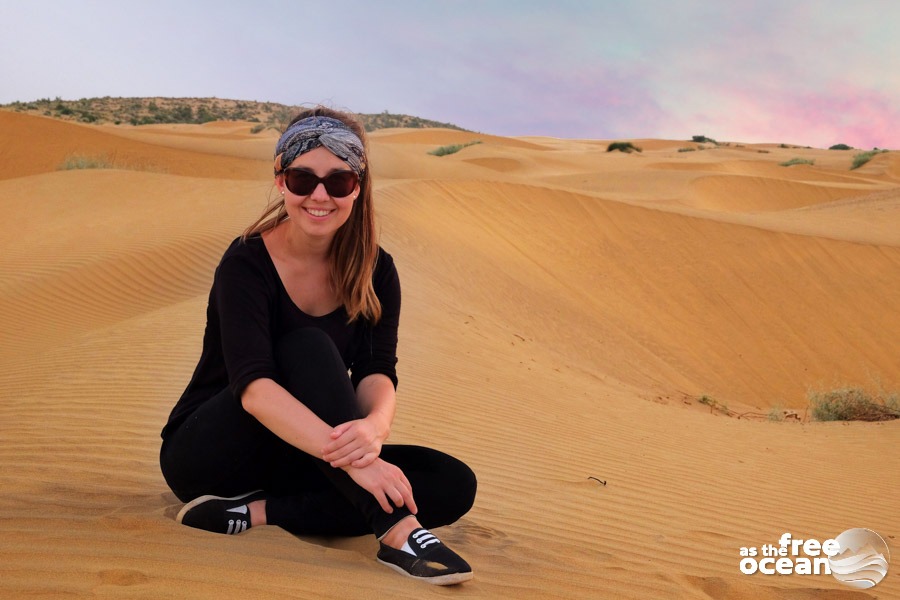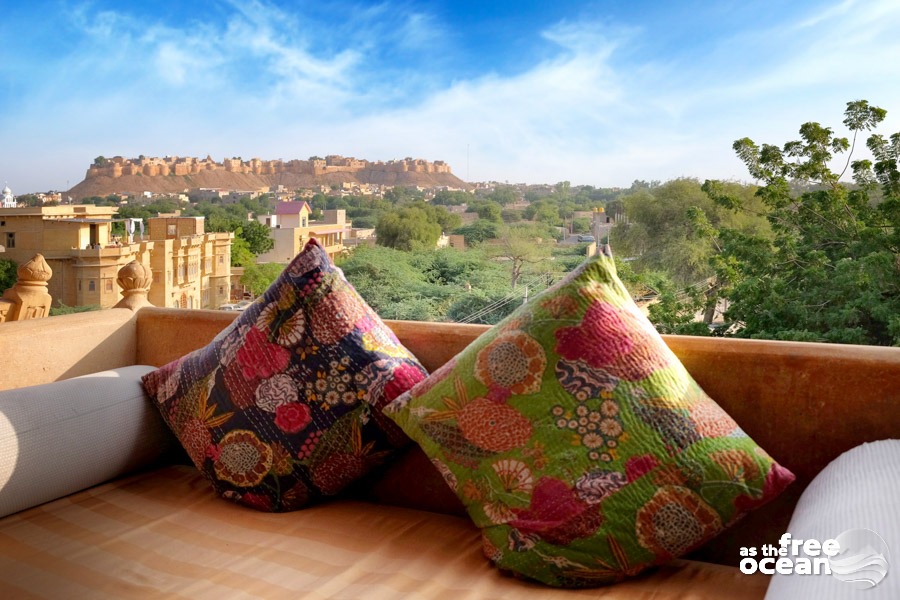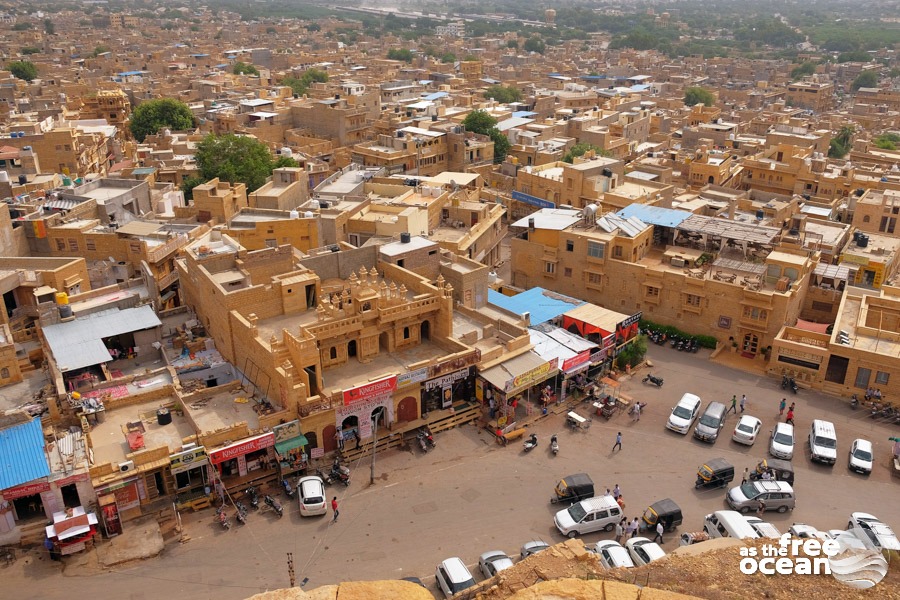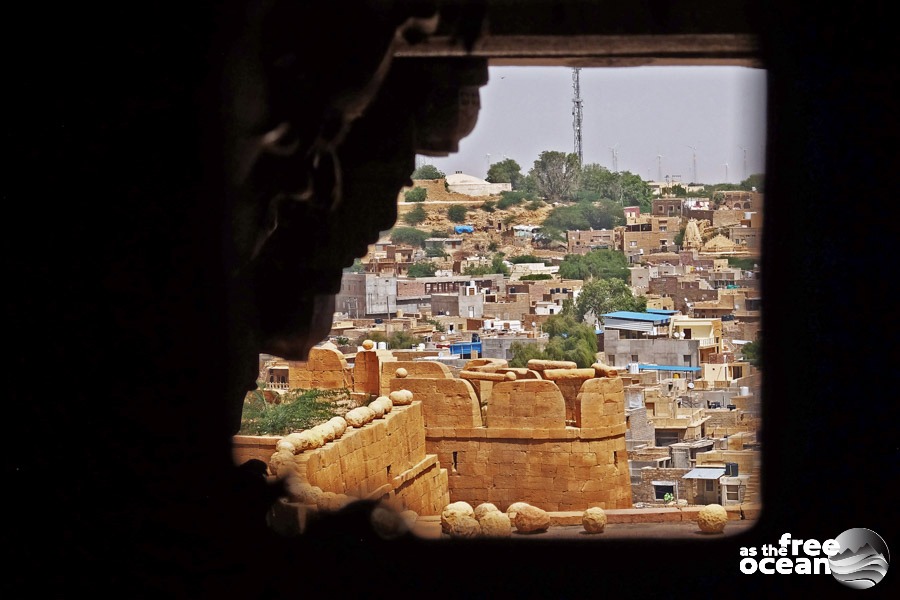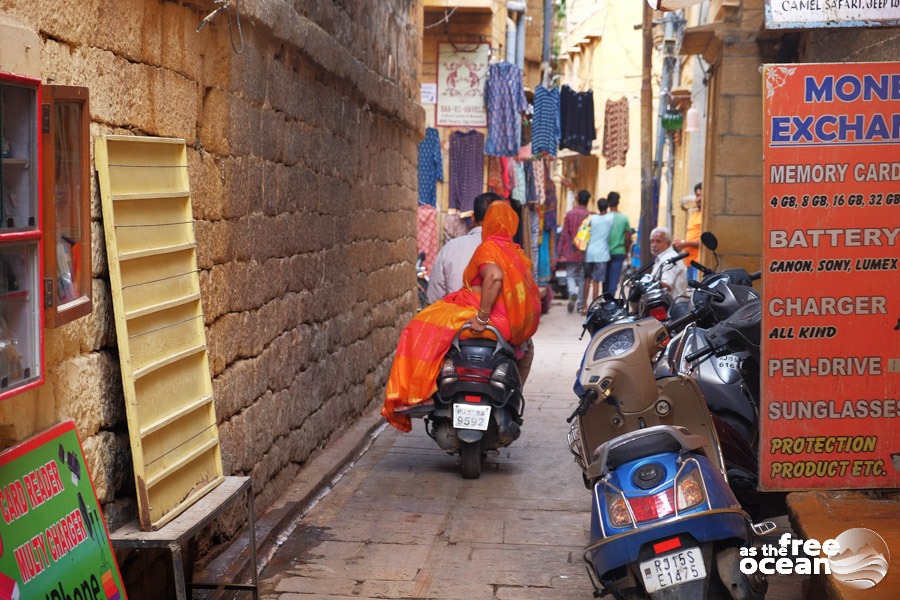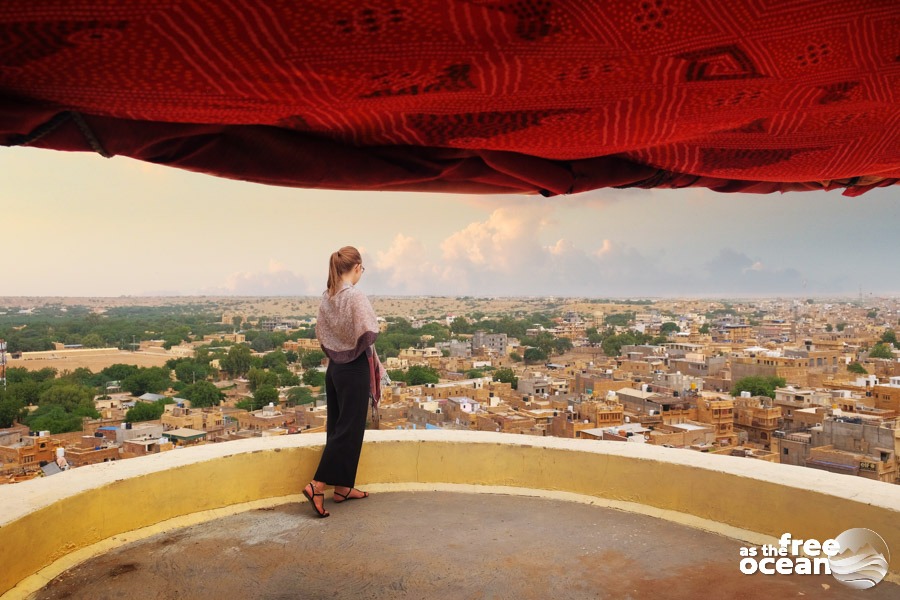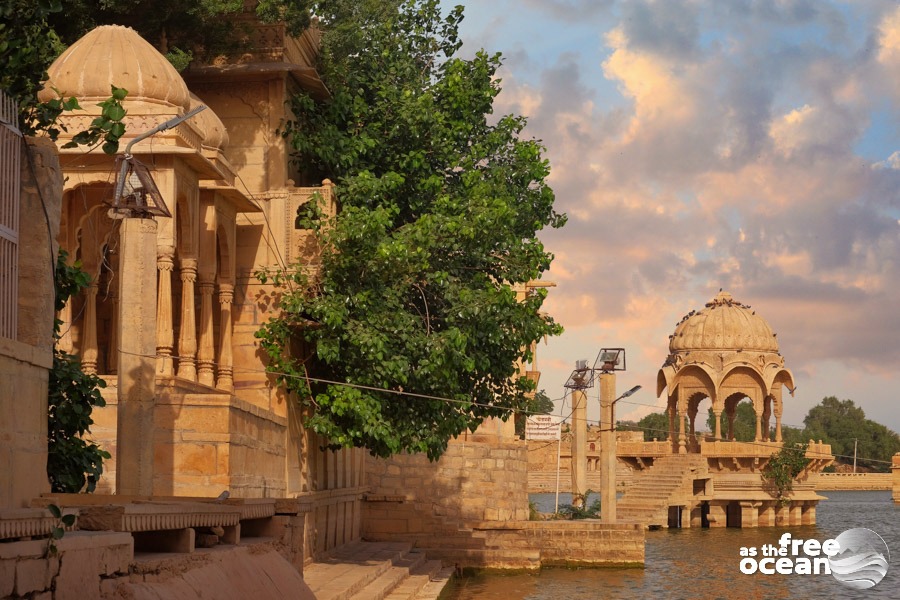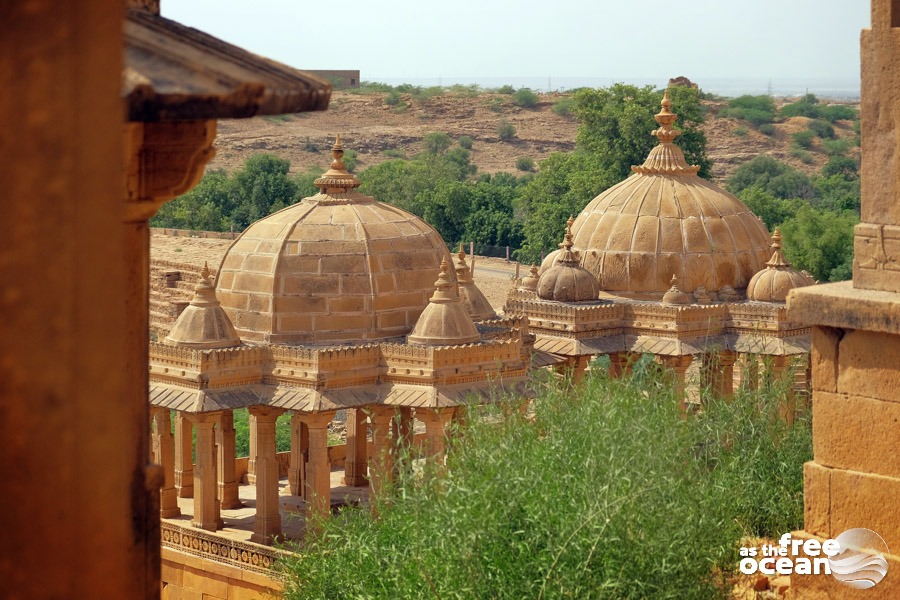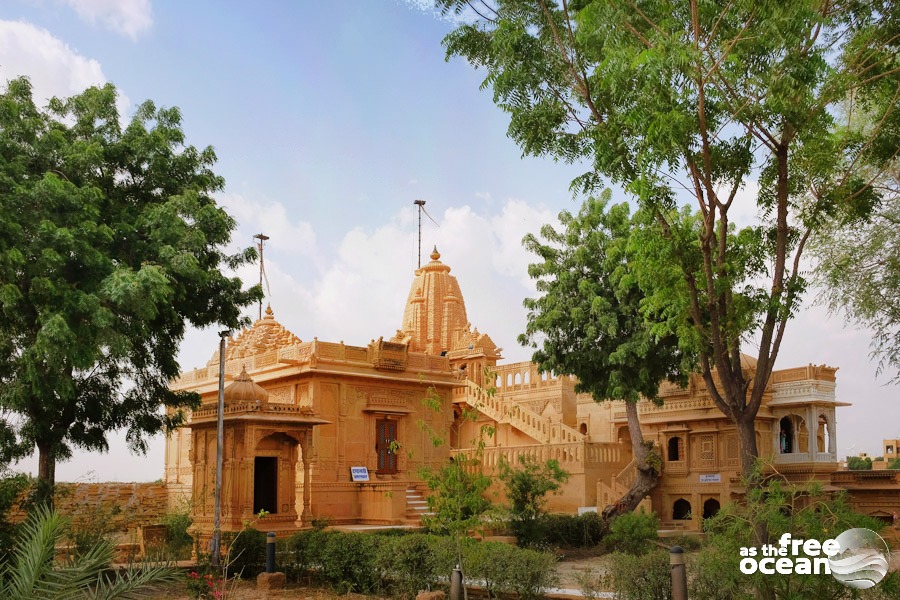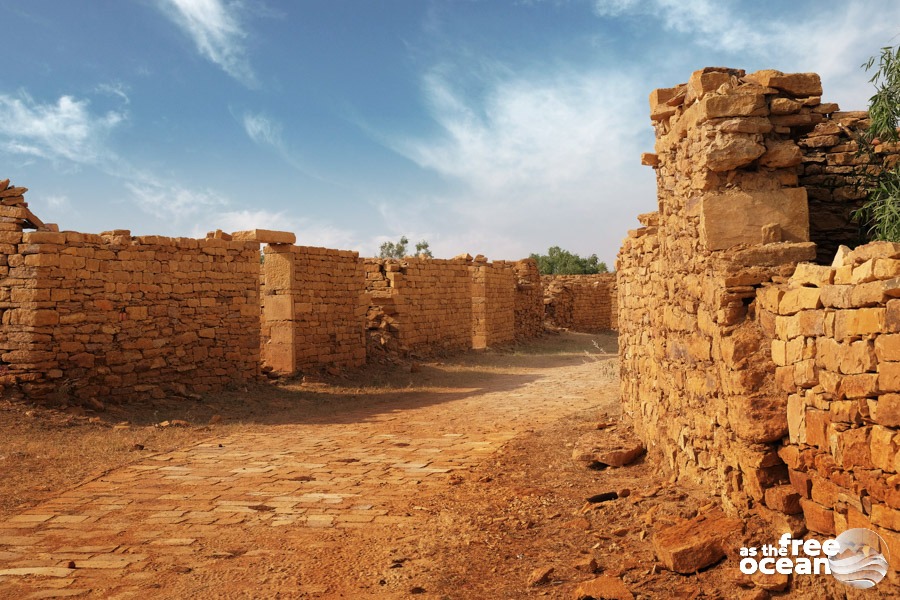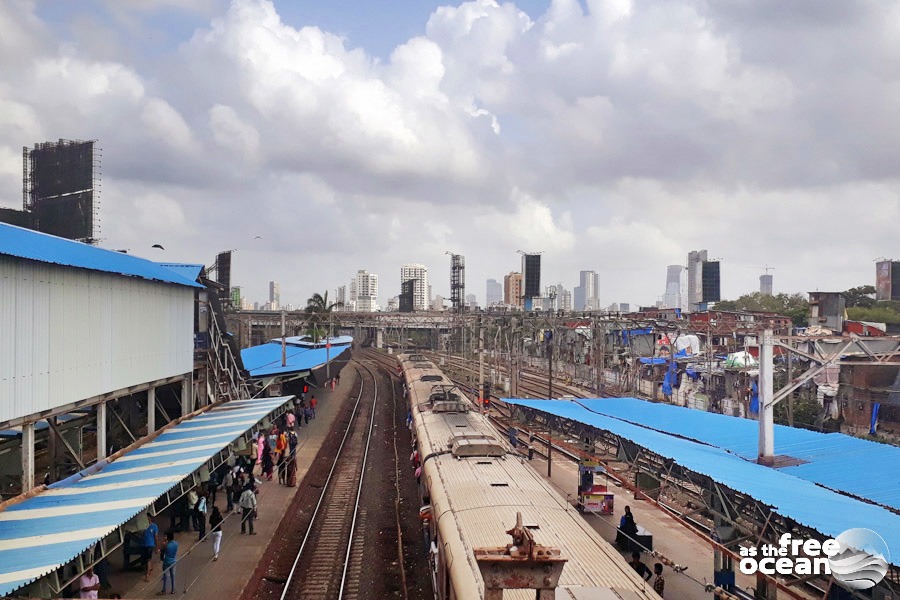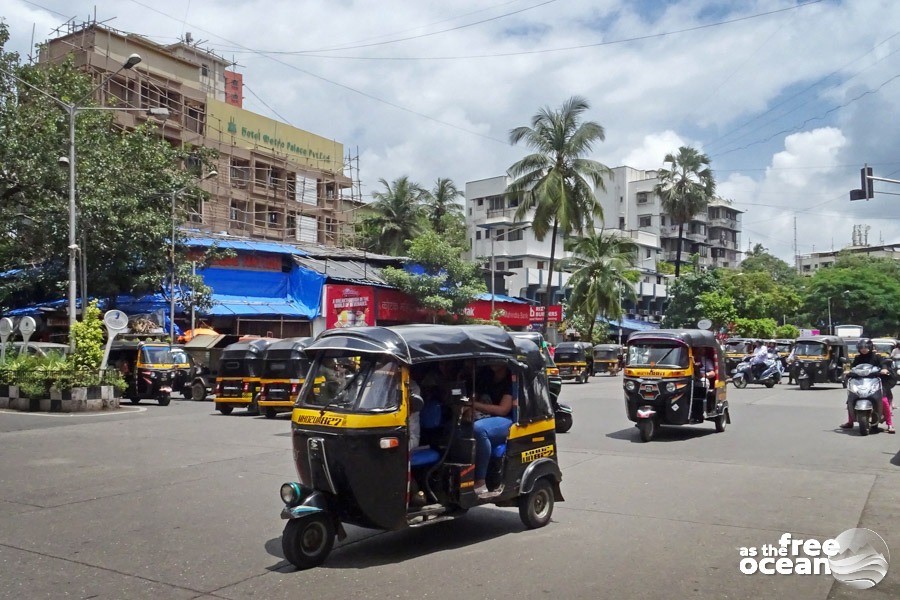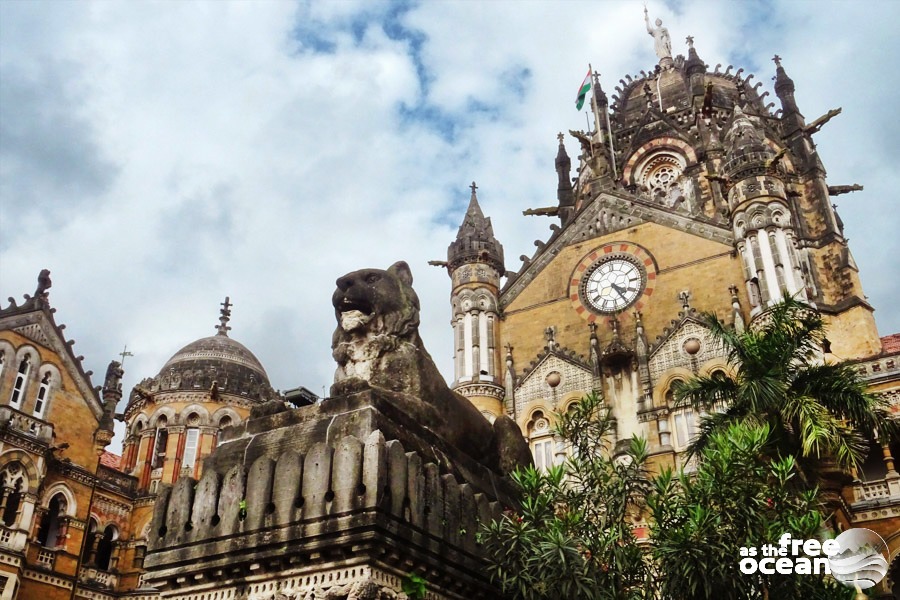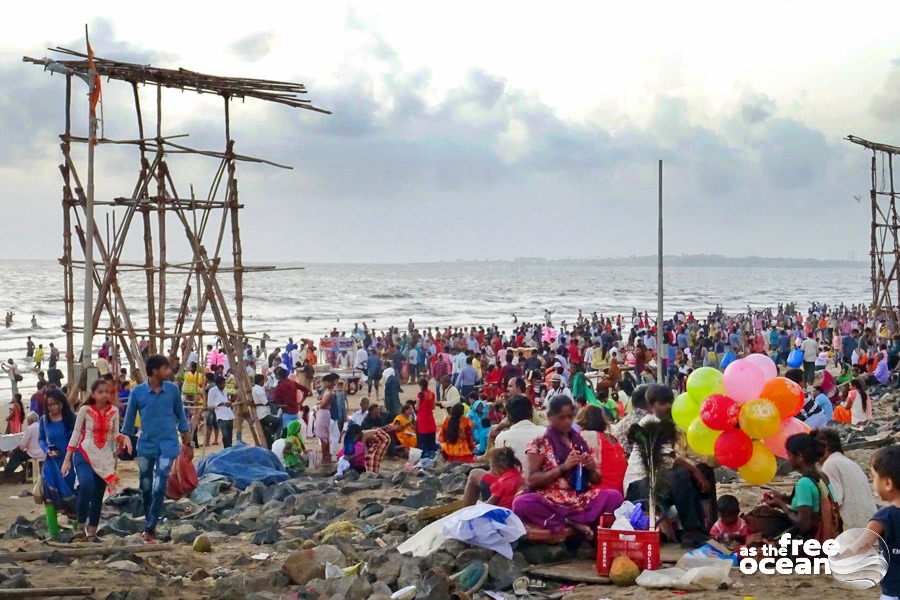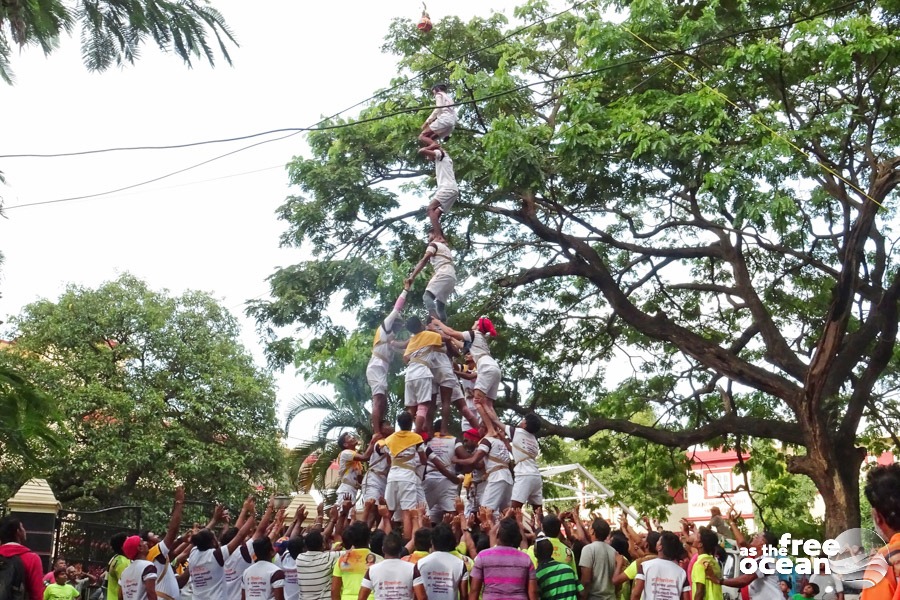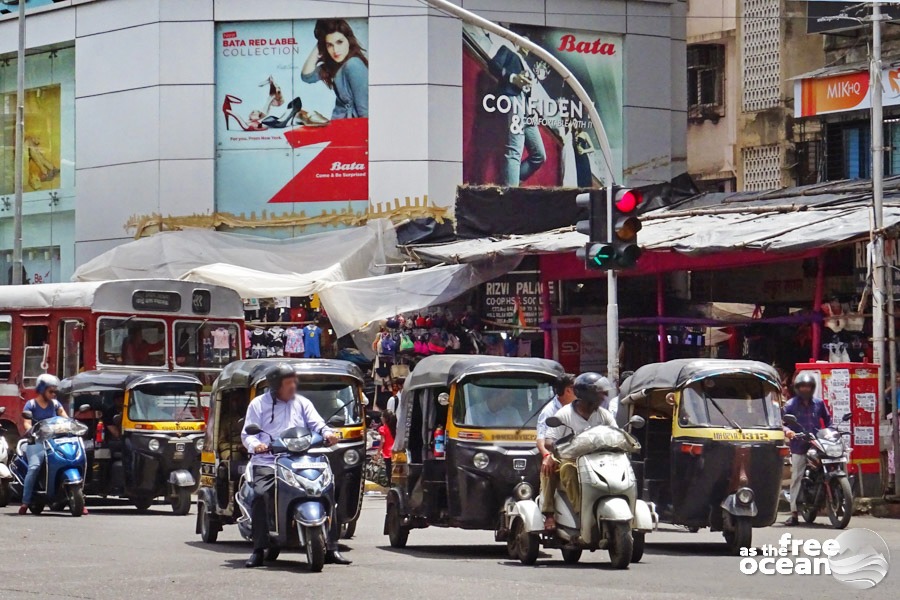It was early in the morning when we left our beautiful room at Fifu Hotel, where we spent an incredible time during our Workaway project in India.
Soda, the driver with whom we did also the safari in the desert, dropped us with the jeep at the train station. It was our first train ride in India. When we boarded the train we thought that we were in the wrong one, as our carriage was totally empty. The train was supposed to leave at 07.00 am. We knew already that Indian clocks function according to a different rhythm, but 15 minutes later after the scheduled departure, the train was still in the station, when someone came to check our tickets. We asked him if we were on the right train and about the time when we were supposed to leave. The friendly man nodded and told us that the train leaves at 07.00 am. We smiled at his answer, feeling better knowing that at least we were on the right train.
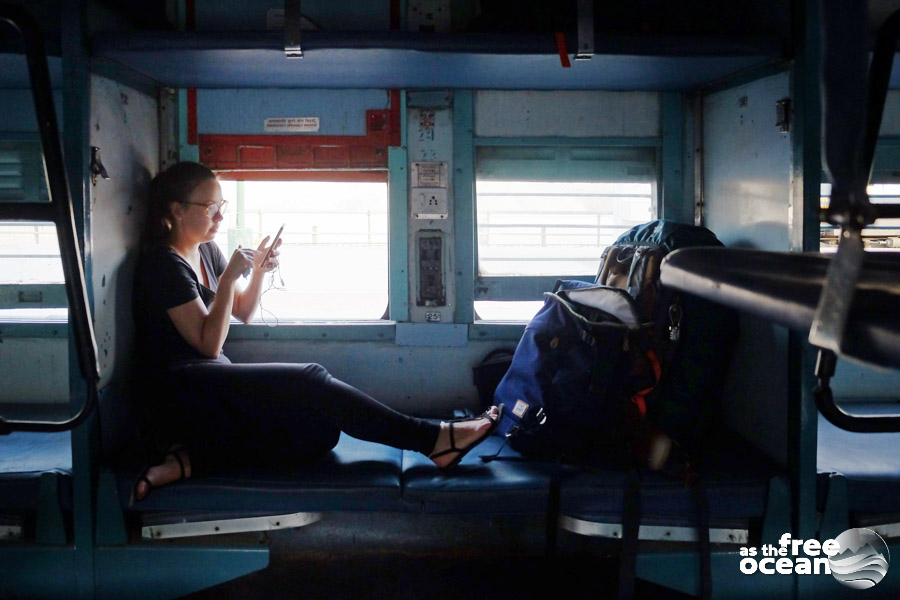
A few minutes later the train started to move when we had a last glimpse at the fort of Jaisalmer.
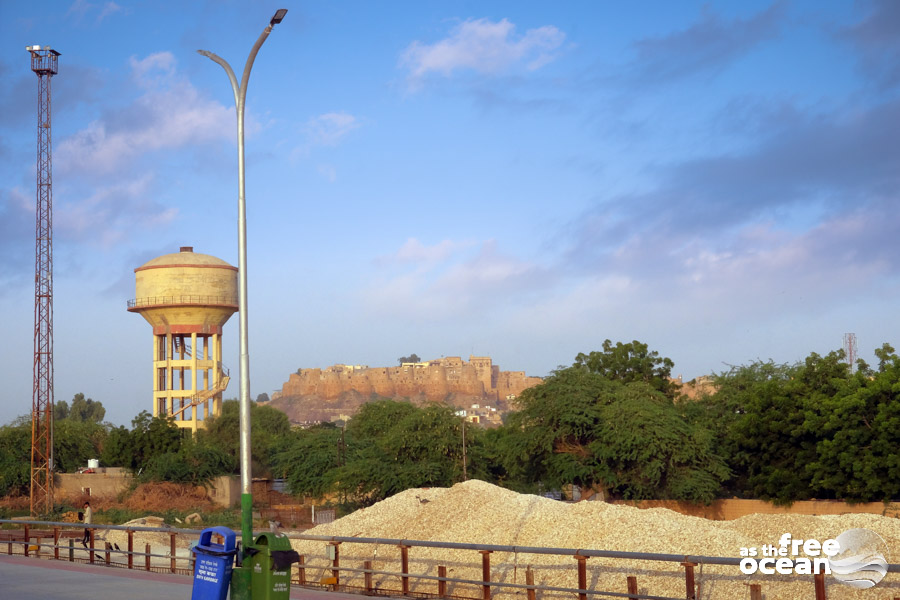
It was a really sad goodbye. Jaisalmer conquered our hearts, not only with the beautiful landscapes and the impressing structures but also with its people. One of the things that impressed us more was the silence of the place, while soon after Jodhpur managed to remind us what India was all about.
Arriving in Jodhpur
The train got more crowded in a very short time. It was quite entertaining to see all the people in their beautiful and colorful clothes. Even if we departed late from Jaisalmer, we reached our destination 20 minutes earlier. Upon our arrival, we bargained for the price of a tuk-tuk ride and later in the afternoon we could already check-in at our “home” for the following few days.
From the terrace of the hostel, we could admire the imposing Mehrangarh Fort, located on a hill in the middle of the city. We went out to explore the area and, while looking for a place to eat, realized once again that finding a local restaurant with decent prices in India is not always an easy task. Street food stalls can be usually found during breakfast, lunch and dinner time but while looking in the late afternoon, when many sellers take a break in order to hide from the heat, it seemed a bit challenging to find any.
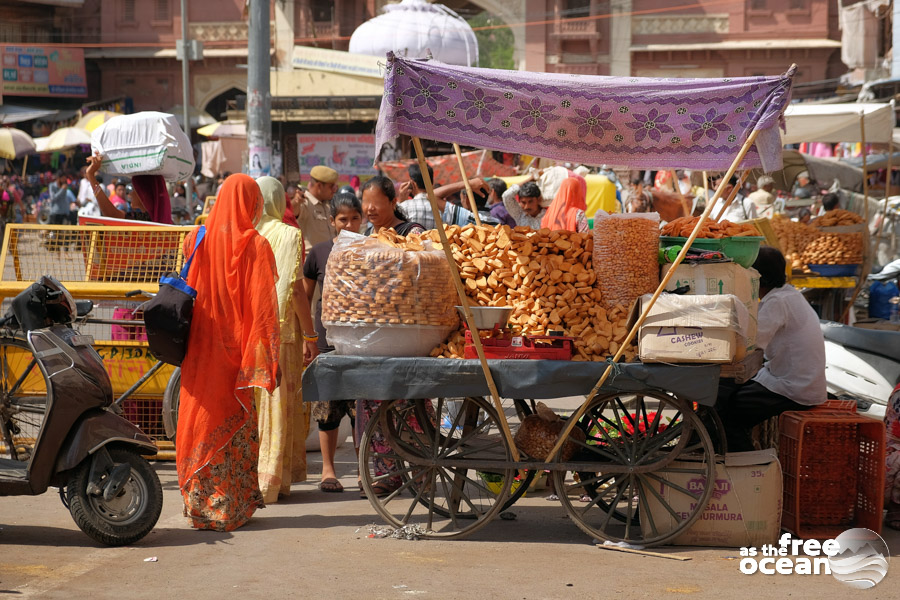
The Blue City Jodhpur
Jodhpur is the 2nd biggest city in the state of Rajasthan and, compared to Jaisalmer, it felt incredibly busy with rushing tuk-tuks, lots of noise and dirt.
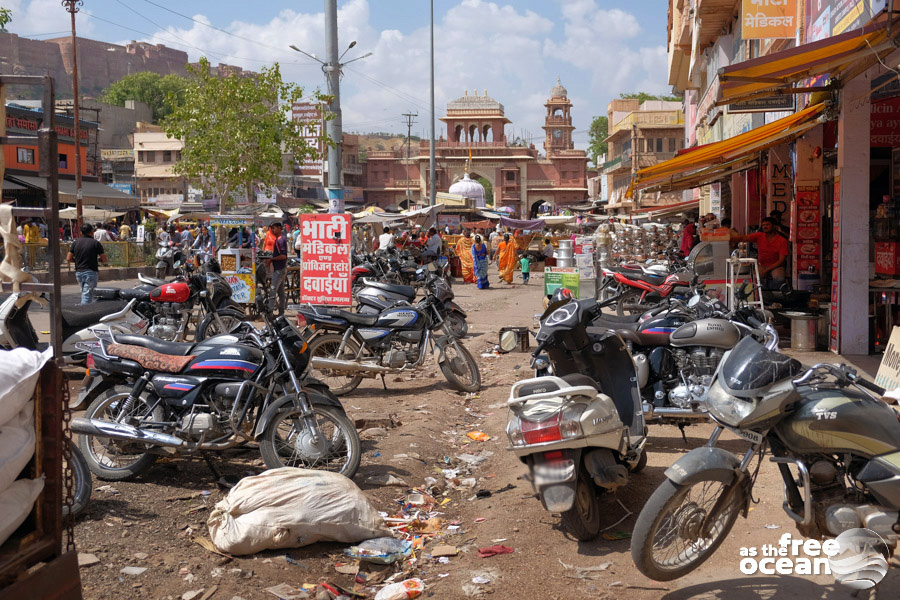
The “Blue City” is located at the eastern border of the Thar Desert. Many of the houses here are colored in blue, for different reasons. First, blue is considered a color that absorbs less heat. It is also known as a good mosquito repellent. Another reason refers to ancient times when the priests of the higher cast were coloring their houses in blue.
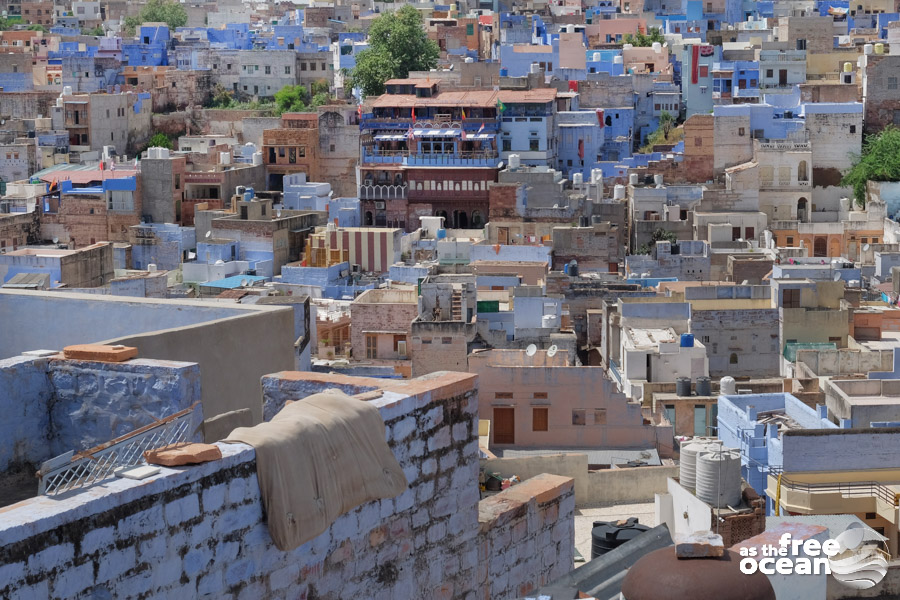
We were strolling around on the busy streets of the city and ended our walk at the famous Ghanta Ghar (clock tower), located in the middle of a large bazaar. That evening we enjoyed a light dinner with fruits and vegetables that we bought from the vendors there.
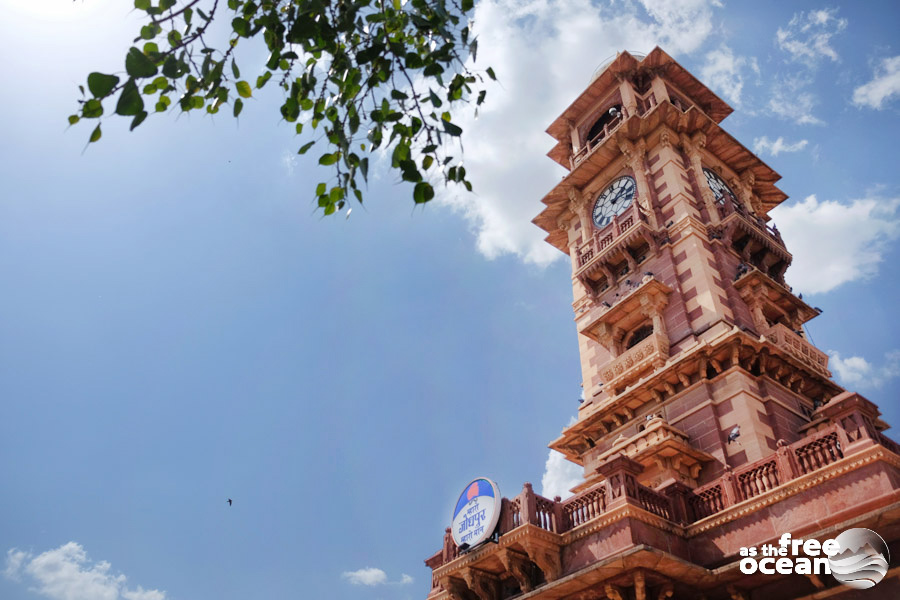
What to see
The following morning we started early with the wish to discover some of the attractions that the city had to offer. We visited first the Jaswant Thada cenotaph, built by Maharaja Sardar Singh in memory of his father. From the mausoleum, we could admire a beautiful view overlooking the fort and the city.
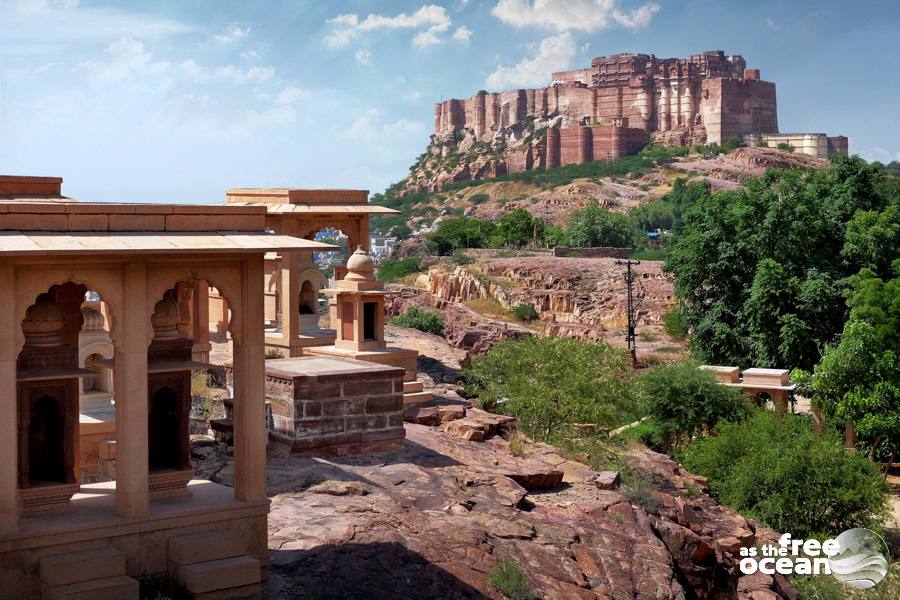
The price for the entrance was only 50 Rupees (ca. 0,58 Euro) and no additional charge for the camera. The place is surrounded by an ancient wall and a small lake. Visiting the area covered by the wall costs an additional 100 Indian Rupee per person + 200 Rupee for a guide, as it is not allowed to enter the area without guidance.
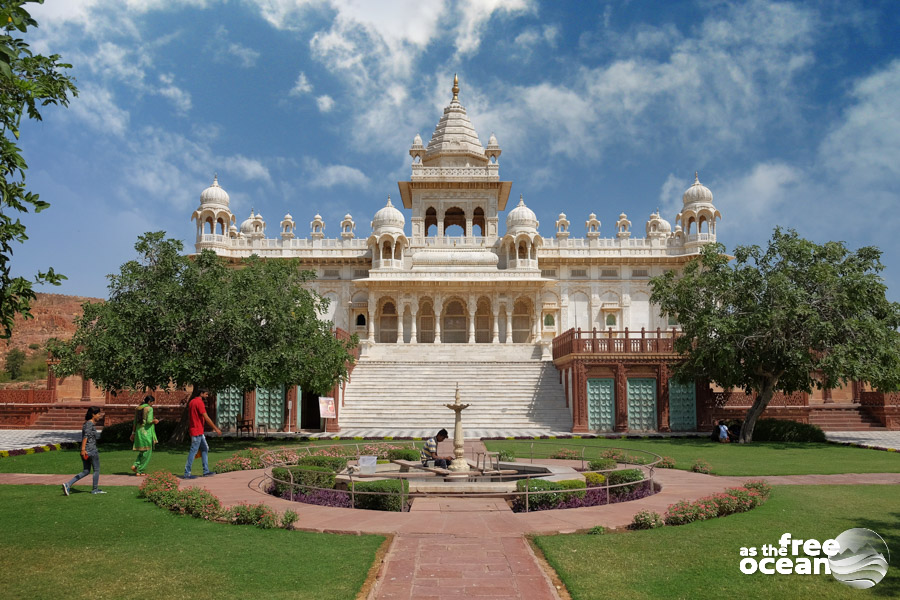
While leaving the area, we were approached by many tuk-tuk drivers and, as our plan was to go towards the Fort, which was only 800m far, we did not pay attention to them at first. Some were actually offering tours and since the weather was hot and made it difficult to walk around, we took the option of a tour into consideration. So, after a quick negotiation of the price, we agreed with one of the men to bring us to the Fort for a photo stop and then to the Mandore Garden, followed by a visit at the Umaid-Bhavan Palace and later to return to the Clock Tower. Neither I nor Alex are very good at bargaining, but we knew it was the most normal thing to do in India and we happily negotiated a price of 500 Rupee for the entire afternoon.
We decided not to go inside the fort as the entry price of 600 Rupees per person was a bit too high for us, but we felt lucky to get another amazing view of the blue city from the entrance of the fort.
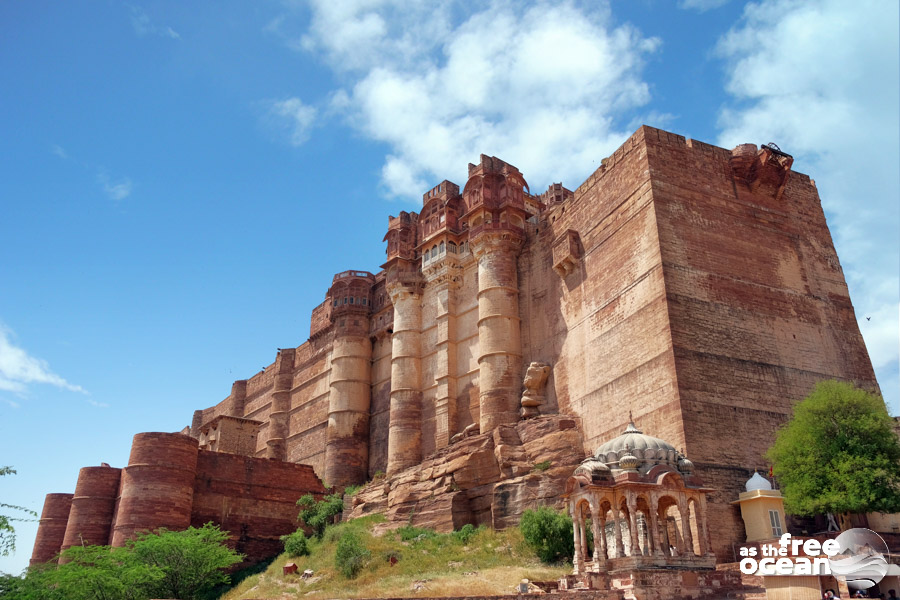
Our tour continued towards the Mandore Garden. At that time of the day, the streets of Jodhpur were much more crowded, offering a typical picture that visitors usually get when they arrive in India. Cows, tuk-tuks, dogs, dust, people in colorful clothes, loud music announcing an upcoming festival and traders that were selling everything you can imagine. We enjoyed a lot the flair of the city but we also understood that for others it could feel quite overwhelming and disturbing.
The entrance at the Mandore Garden was free, which we found very surprising, as in India tourists usually pay for most attractions. The garden felt nice to visit, but it didn’t seem to be very well taken care of. We admired the Temples and Chhatris and the wall of the 330 million gods.
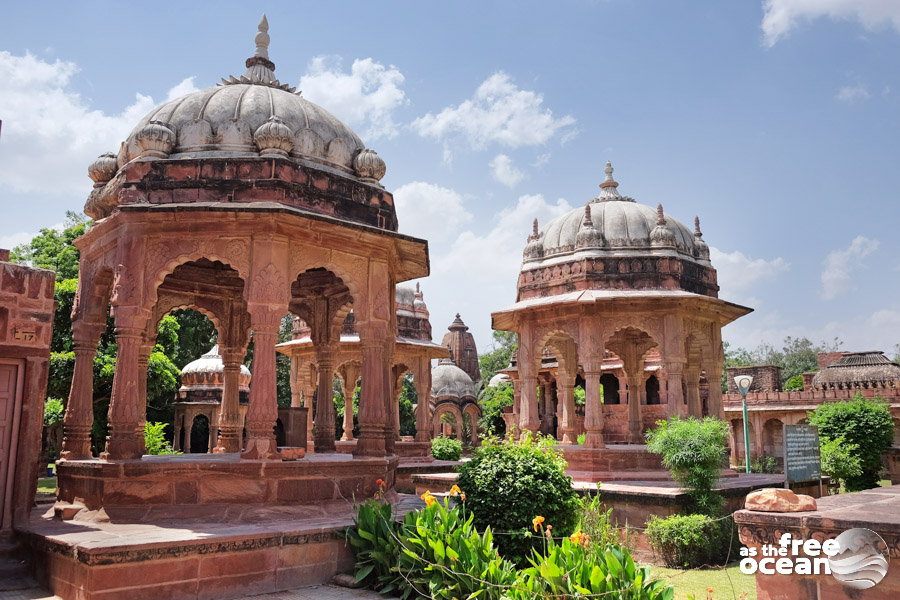
While this place has been recommended to us by many locals, we believe Jodhpur has more interesting highlights to offer, that’s why we kept our visit to the garden short and rushed to the Umaid-Bhavan Palace, one of the biggest and most impressive palaces in Rajasthan. We were told that it is the biggest privately owned building in the world, home of the family of Maharaja Gaj Singh II, incorporating also the most expensive hotel in Jodhpur and a museum, where tourists can admire the old architecture and art items. Nowadays, the Maharajas carry their titles but do not have any political implications anymore.
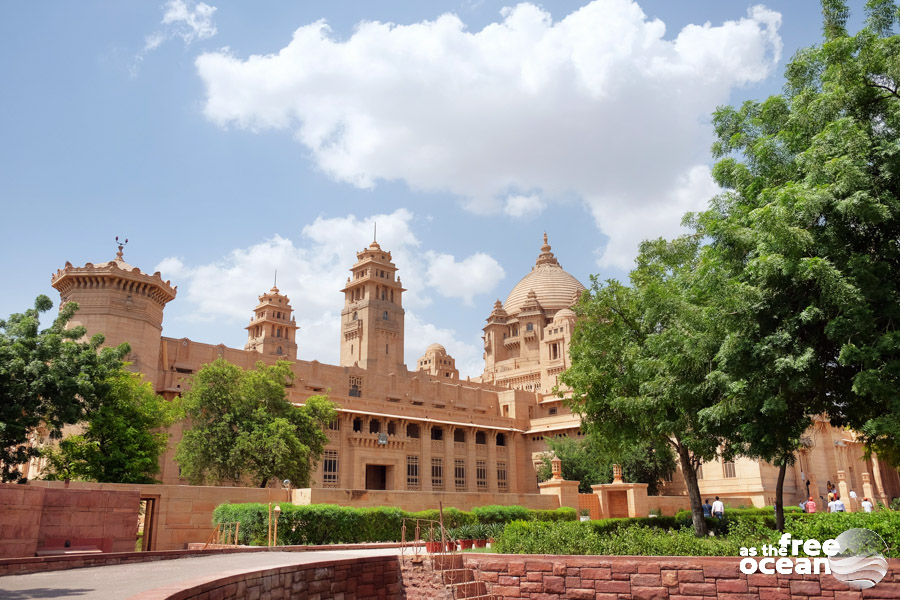
From here we drove back to the city center and spent the afternoon walking around, returning shortly after at our accommodation.
The following day we spent our time around the blue city, located on the other side of the fort. Here we also got to know about the Ganesha Festival that took place during our stay. In India, you can be sure that every day there is a traditional ceremony or festival going on somewhere, which are celebrated in a quite loud and colorful way.
The time in Jodhpur passed fast, bringing us closer to our visit to Jaipur, the biggest city in Rajasthan.

